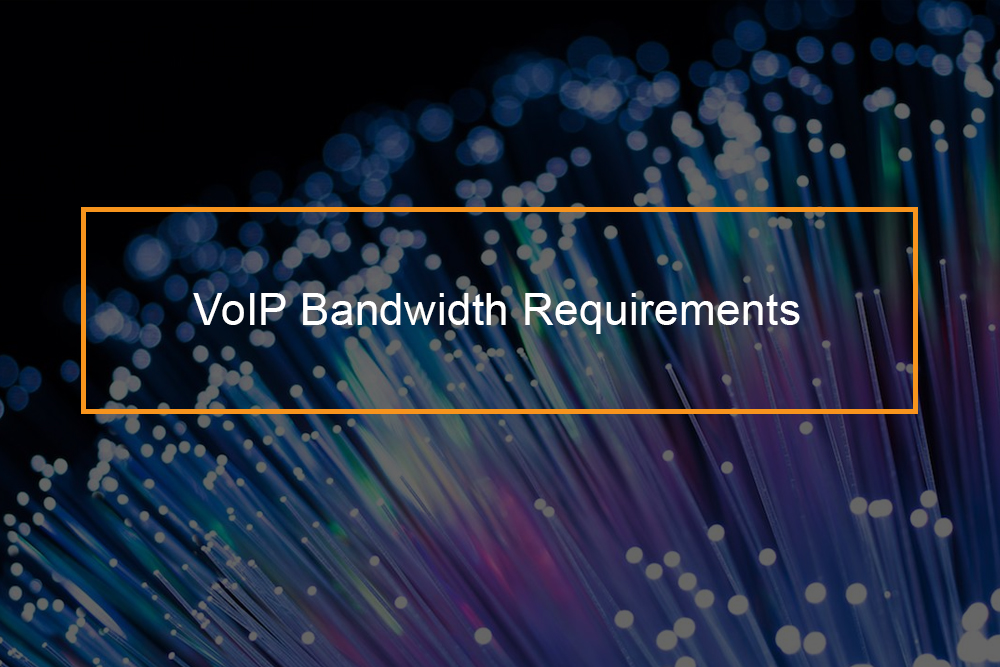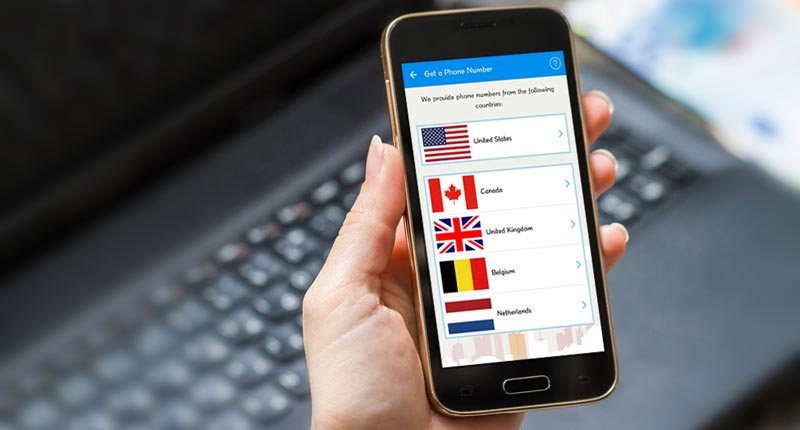VoIP bandwidth requirements guide
 In most cases you will require an “always-on” type of connection with a bandwidth of at least 128kbps on both download and upload for a single VoIP voice connection (an uncompressed voice connection will use approximately 90kbps on both the download and upload. There are connections using a compressed voice’ codec’ that will use less). Typically you will need a broadband internet connection, like cable, DSL, or T1 or wireless.
In most cases you will require an “always-on” type of connection with a bandwidth of at least 128kbps on both download and upload for a single VoIP voice connection (an uncompressed voice connection will use approximately 90kbps on both the download and upload. There are connections using a compressed voice’ codec’ that will use less). Typically you will need a broadband internet connection, like cable, DSL, or T1 or wireless.
Enterprises are always looking for ways to enhance their communication with customers, and Voice over Internet Protocol (VoIP) has made it simple and cost-effective to do so. Nonetheless, there are some elements you must first assess when implementing your VoIP system. Evaluating how much bandwidth is very essential to do, since you will require to have internet speeds capable of managing large call volumes.
Does VoIP use bandwidth?
What is bandwidth, and why is it important?
Bandwidth is a term that is used to refer to the data transfer rate of your internet service. It basically means the specific amount of data that can transmit over your internet service during a particular period of time. The bandwidth you get from your internet service provider (ISP) is significant because you require to allocate a certain amount to your Voice over IP service.
Because VoIP phone systems are entirely operated over the internet, your call quality will be directly correlated with your internet service and speed. In case you have slower internet speed, which translates to lower bandwidth, you will have a drop in call quality.
Bandwidth can influence VoIP calls in many ways, so to evaluate if your network can manage to implement VoIP, ask yourself the following questions.
- If your network has a quality service setting that enables you to optimize VoIP
- What are the download and upload speed you get from the bandwidth service provider
- Do you operate other applications or services on your network concurrently? If yes, how much of your bandwidth do they utilize?
Note that the quality of service setting enables you to prioritize various types of traffic such as voice, within your network.
How many MBps do you need for VoIP?
How much bandwidth do I need?
To accurately determine how much bandwidth is required for your business VoIP, you require to have a basic opinion of how many concurrent calls you and your staff will be placing. Basically, you will require anywhere from eighty-five to one hundred kbps per concurrent VoIP call. Bear in mind, the more browsing operations, the less bandwidth that is accessible for VoIP calls.
Something else that determines the quality of your calls is which codec your provider is implementing. A codec is a program that generally is used to change voice signals into digital data that can be transferred through the internet during your VoIP call. Various codecs have different sampling rates. For example, phone.com uses codecs that need approximately one hundred kilobits per second (kbps) traveling up from your phone line and down top your telephone line for every second for every call. So in case you have three employees, all on calls at the same period, the minimum requirement is three hundred kbps up and three hundred kbps down.
Besides, because the internet pipe into your business or home is being used for other activities such as web browsing, sending and receiving an email, file transfers, point of sale systems, web-based office services, and others, many candidates are contending for bandwidth.
Before we explain how codecs are used by VoIP lets understand the terms below.
- Lossy compression: Decreases the file size up to ten. However, some audio data is permanently lost, so the audio quality may be slightly compromised.
- Lossless compression: This rips your audio file, so it is significantly decreased in size, but the quality is lost. Simply put, it is a perfect copy.
- Bitrate for every second: The rate at which bits data is transferred in a given period.
| Codec name | Average bandwidth needed | Bitrate per second | Description |
| G.728 | 32 Kbps | 16 Kbps | Provides toll voice quality for less bandwidths |
| G.726 | 56 Kbps | 16-40 Kbps | Deployed in international trunks |
| G.711 | 80 Kbps | 64 Kbps | Provides lossless compression to decrease bandwidth needs, can be used for faxing as well |
| G.729 | 24 Kbps | 8 Kbps | Deploys an algorithm for extreme compression, works well with less bandwidth |
| G.722 | 80 Kbps | 48-64 Kbps | High quality. However, requires more bandwidth |
How to evaluate your functional bandwidth?
It is crucial to know exactly how much bandwidth you have. Nonetheless, your internet service provider will possibly only confirm what you signed up for, also referred to as advertised up to value as in 50 Mbps or up to 150 Mbps.
The best way to evaluate your bandwidth is to run a throughput test using a site such as www. Speedtest.net. This will provide you a snapshot of your current functional bandwidth, but it is essential to note that this metric varies depending on how much data all of the different solutions you are using need at any given period. This test offers variable results depending on the location used for testing.
Bear in mind that your upload speed is usually less than your download speed, so you require to make sure that the lesser number of the upload speed matches what you need. Because most service providers do not assure sustained bandwidth besides the topup value, you can add a 10x or 5x safety margin when evaluating bandwidth.
How much bandwidth do I need for video conferencing?
How much bandwidth is required for video call?
To make a video conferencing call, you require to fulfill some requirements, including a good HD webcam, a powerful enough computer. You also need a sufficient bandwidth, meaning an internet connection that is speedy enough to carry the bulk of video frames in high quality. Different VoIP services require different bandwidth. For this section, we will use the most used platform -Skype HD video calls-to assess how much bandwidth is needed.
For simple video calling, you will use about 300 kilobits for every second (kbps). For an HD video, you will require at least one megabits for every second (Mbps)and are sure to have good quality with 1.5 MPs. That is for a one-to-one conversation. When you have more participants, add another one Mbps for every added participant for comfortable video conferencing. For instance, a group of seven to eight people will use about 8 Mbps for HD video quality if you want to chat concurrently with them.
Optimizing your quality of service and VoIP phone systems
You need to ensure you have sufficient bandwidth to make high-quality VoIP calls. In case you feel as though the quality of your calls is insufficient, you can adjust your quality of service configurations on your router. Most routers enable you to prioritize voice calls on your data network, which prevents other software from influencing the call quality. In case you are not sure if your router has the ability, call your internet service provider for more information and guidance.
Also, some routers have the ability to prioritize voice services so that the effect of other software does not degrade voice quality. To prevent audio challenges caused by voice and data competing for the same bandwidth, ensure your network router’s Quality Service (QoS) settings are set as follows so that they prioritize transmission of voice packets to your WAN connection.
- UDP/16384 to 32768 – Priority: High
- UDP/6060 – Priority: High
- UDP/5060 – Priority: High
Bandwidth and high-quality VoIP calls
Your internet service and bandwidth are vital to the success of your VoIP phone system. In case you are interested in upgrading to VoIP, talk to your internet provider about your expected usage, and work with them to ensure that your service can sufficiently manage your calls through VoIP phone numbers.









